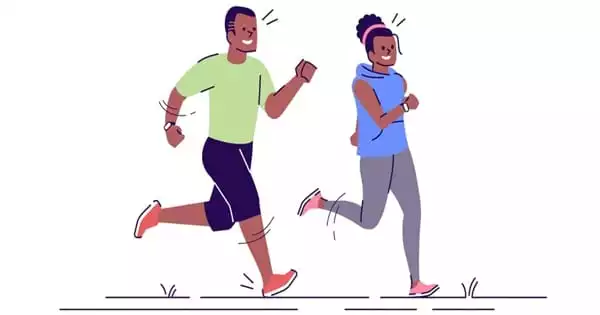According to two new studies headed by Iowa State University researchers, exercising for half an hour may lower symptoms of depression for at least 75 minutes after the workout and increase the advantages of therapy.
“A lot of earlier research on the impact of exercise on mental health in general has employed very broad measures of wellbeing. What we were really interested in was how acute exercise – that is, one session of exercise per day – affects the primary symptoms of depression” said Jacob Meyer, an ISU professor of kinesiology and the lead author of both papers.
The researchers recruited 30 adults who were undergoing significant depressive episodes for the first investigation. Participants completed computerized surveys before, half-way during, and after a 30-minute session of either moderate-intensity cycling or sitting, as well as 25-, 50-, and 75-minutes following the activity. Those who cycled during the initial lab visit returned a week later to repeat the experiment with 30-minutes of sitting, and vice versa.
Each survey included standard questions and scales used to assess depression symptoms, as well as several cognitive tasks, including the Stroop test; participants responded to the color of a specific font rather than the word itself (for example, indicating red when they saw the word ‘blue’ in red ink).
A lot of earlier research on the impact of exercise on mental health in general has employed very broad measures of wellbeing. What we were really interested in was how acute exercise – that is, one session of exercise per day – affects the primary symptoms of depression.
Jacob Meyer
The survey data was then used to track any changes in three key depressive disorder characteristics: depressed mood state (e.g., sad, discouraged, gloomy), anhedonia (i.e., trouble experiencing pleasure from previously loved activities), and reduced cognitive function (e.g., difficulty thinking, juggling multiple pieces of information at once).
During the cycling trial, participants’ low mood improved over the course of 30 minutes and continued to improve for up to 75 minutes afterward. The improvement in anhedonia began to fade 75 minutes after exercise, although it was still better than the participants’ levels of anhedonia in the control group.
In terms of cognitive performance, participants who cycled were faster on the Stroop test mid-activity but slower 25- and 50-minutes after exercise compared to the resting group. Meyer believes that more research is needed to fully explain the variation.
“The nice part is that these advantages to sad mood and anhedonia may continue longer than 75 minutes. We would need to conduct a longer study to see when they begin to fade, but the findings imply that there is a window of time following exercise when it may be easier or more successful for someone with depression to accomplish something psychologically or intellectually demanding “Meyer stated.

He said that could include giving a presentation, taking a test — or going to therapy. “Can we synergize the short-term benefits we know that happen with exercise and the clear long-term benefits with therapy to deliver the most effective overall intervention?” asked Meyer.
As part of the effort to answer that question, Meyer and his research team conducted a separate pilot study.
Half of the ten individuals exercised on their own (e.g., cycled, ran, walked) for 30 minutes at a moderate level, which the researchers confirmed with Fitbit data, before signing up for an hour of virtual, cognitive behavior therapy each week. Prior to their therapy sessions, the other individuals merely went about their daily lives.
Participants in both groups improved at the end of the eight-week intervention program, but those who exercised before meeting with a therapist had more pronounced reductions in depressive symptoms.
The researchers said the results indicate exercise could help amplify the benefits of therapy for adults with depression.
“With such a small cohort, we did not undertake formal statistical testing,” Meyer explained, “but the results are promising. Overall, the pilot trial demonstrated that people were interested in and committed to the combined strategy, and that exercise appeared to have some impacts on depression and a couple of therapeutic mechanisms.”
One of these mechanisms is related to the client-therapist connection. Meyer believes that if a person has a connection with their therapist, they are more likely to continue attending to therapy and the sessions will have a bigger impact.
Participants in the pilot trial who exercised before their cognitive behavior therapy sessions felt a faster and stronger connection with their therapists. The findings show that exercise may be priming or “fertilizing” the brain to participate in more emotionally difficult activity that can occur during therapy, according to the researchers.
The researchers intend to expand on the novel experiments in the next years in order to better understand how exercise could be included into an effective treatment or intervention for those suffering from chronic depression.





